How can Service Envelopes help us design better interactions?
Service Envelopes are a simple model for describing how service interactions unfold over time, based on a technique audio designers use to shape sound waves.
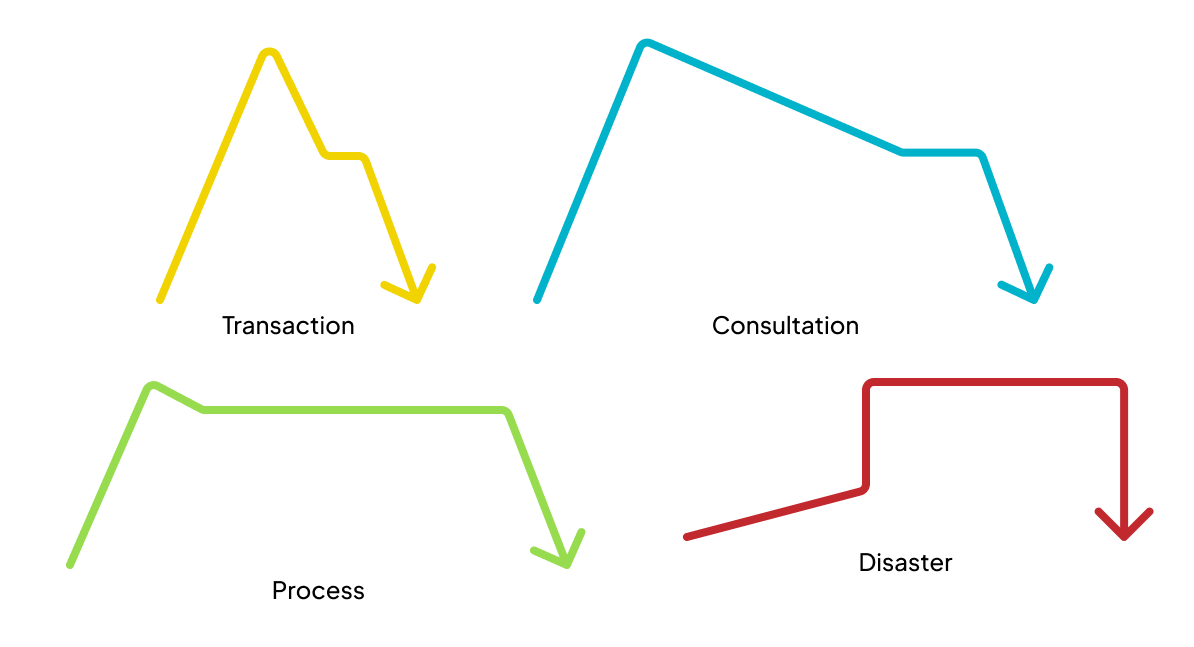
This post describes Service Envelopes, a simple framework for designing service interactions, based on a technique audio designers use to shape sound waves. I like this model for thinking about the narrative structure of a single service interaction, a small level of detail within a broader service journey, with potential for measurement and standards.
Let's start with the model that inspired it. Audio design applications allow a designer to shape sound using something known as an ADSR envelope, which stands for Attack, Delay, Sustain, Release. In a nutshell, this describes the evolving characteristics of a sound, from the moment a key on a synthesiser is pressed, until the key is released and the sound fades out. The model allows an audio designer to manipulate the characteristics of the sound.
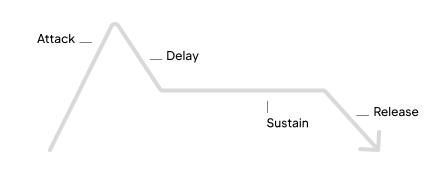
The first phase of the sound playing back is known as the Attack. This establishes how quickly, and how intensely the sound fades in when the key is first pressed. A fast high Attack might give you a sharp, loud effect, good for a tight snare drum. Low and long gives a lazier, deeper sound that's better for an atmospheric background sound.
Delay describes how quickly the sound drops off it's peak, until it reaches a steady volume whilst the key remains depressed. Sustain describes how long that sound remains playing for, whilst Release describes the time it takes to fade away to nothing.
With their attributes of intensity and time, these phases can also give a helpful shape or envelope to service experiences, from the start to end of an interaction.
Respond
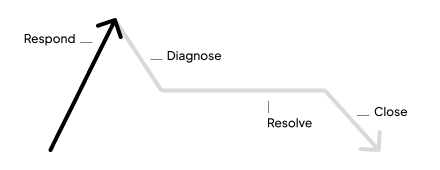
The interaction begins with a trigger and response. This could be a call, a digital event or someone walking into a store. Whilst service experiences may play out over an extended period of time, a rapid response shifts the mode of the experience from demand to supply. Think about quickly unattended problems can escalate, or how frustrating it is to repeatedly ask for help with no response. Paying attention to this moment, and importantly making response times quick, puts us in a position to manage the resolution of the experience in a less fraught way. Consider the difference between the moment a call comes in that an accident has occurred and paramedics are on the scene. There's still an emergency, but it's shifted state from out of control to managed. Critical factors for this phase are that the response is rapid, and that the concerns that triggered the interaction are acknowledged. We don't necessarily need experts on the scene at this stage - think of this as first response.
Diagnose
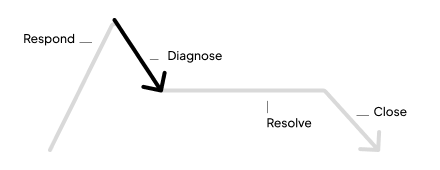
Once the trigger has been responded to, both parties are now involved in the interaction. The next stage is to Diagnose the problem. This is important, as it will define the shape of the remainder of the experience. Simple experience can be resolved quickly and closed. Think of transactions, or simple queries. Asked and answered. A more difficult problem may be challenging to diagnose and this period is extended. This pattern would match complex medical conditions, or hard to reproduce technical errors. Diagnosis is an ambiguous state that requires participants to exchange information, negotiate requirements, and manage potentially heightened emotions of fear and anxiety.
Resolve
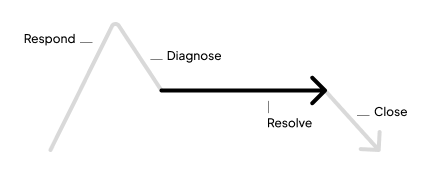
Once the parameters of the experience are clear, the service can enter a potentially extended period of internal processing with little need for direct interaction. This is where the Service Envelope model really shines. Many service experiences go wrong by mismatching the needs of these phases, either taking too long to respond, or leaving people hanging in the ambiguity of Diagnose whilst the team is working on Resolve. Those are all interactions that will be characterised by frequent, tense status checks. By separating the peak anxiety of Respond and Diagnose from the drawn out period of Resolve, we create breathing room to do the work. With clearly managed expectations, transparency about what is happening and regular, low intensity communication, people are usually very understanding about time needed to properly resolve an issue.
Close
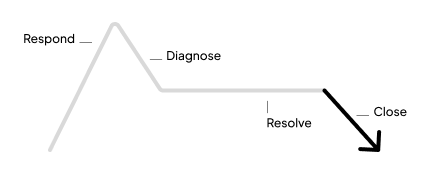
With the underlying issue resolved, all that remains is to provide both parties with well-defined closure, or what Joe Macleod calls Ends. This may involve a period of explanation, handover, farewell or a return to normal. It could require careful, and uncomfortable disengagement, with the potential for power imbalances and resentment. This moment is careful attention as it may have over-sized impact on how the entire experience is perceived by participants.
Service Patterns
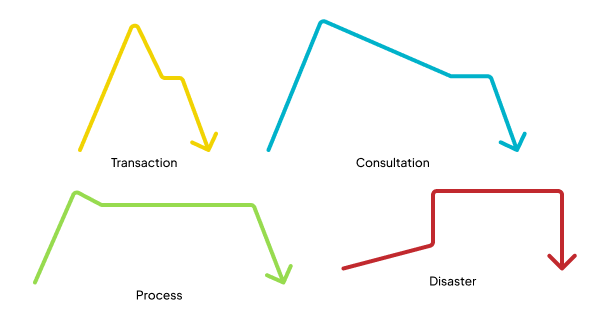
This all gives us a fantastic visual representation of service patterns for specific interactions within a broader service. These may take place across multiple touchpoints, or within a single one. We can adapt our success measures accordingly. We may value speed during Respond, engagement during Diagnose, quality at Resolve and empathy during Close. Each type of interaction may need different processes and roles, and we can use the patterns to assess whether the circumstances we are designing for are well-suited to the systems, processes and values we have in place.
As always, we'd love to hear your feedback on the idea of Service Envelopes, and how you've found them useful for diagnosing or designing better service experiences.

